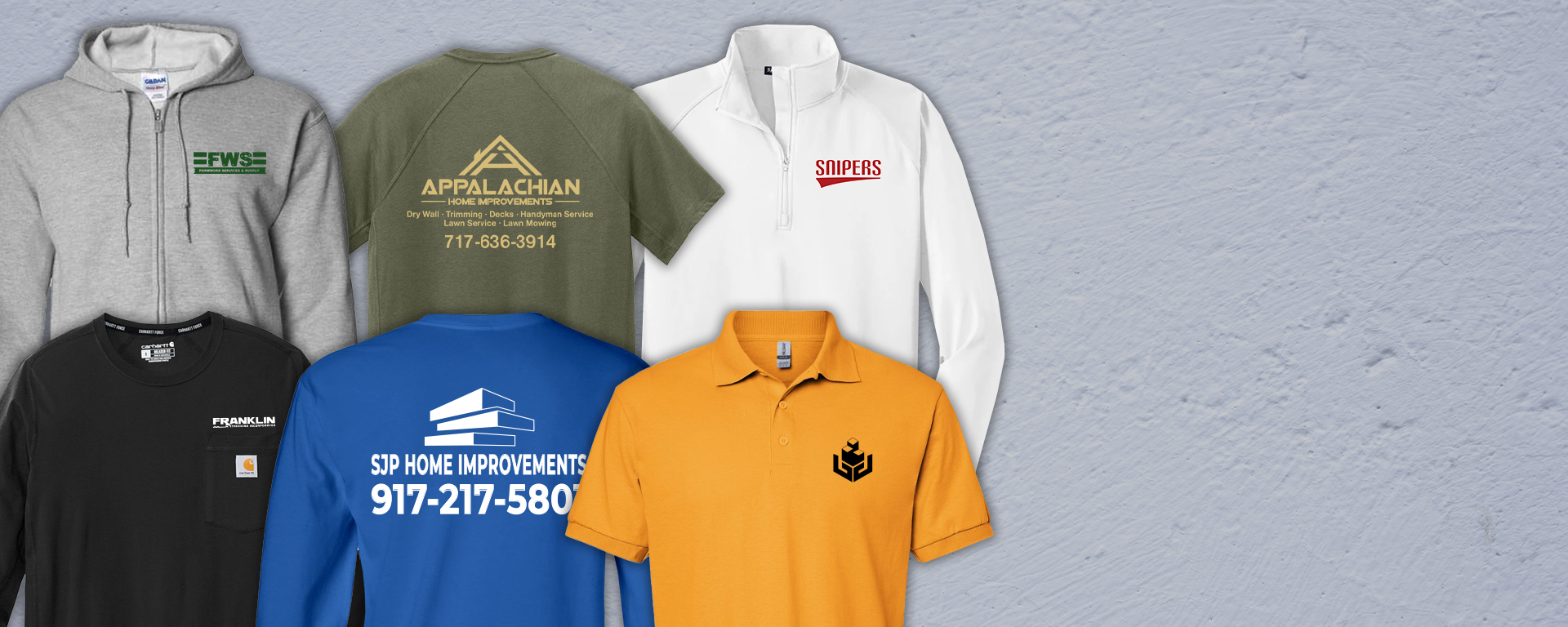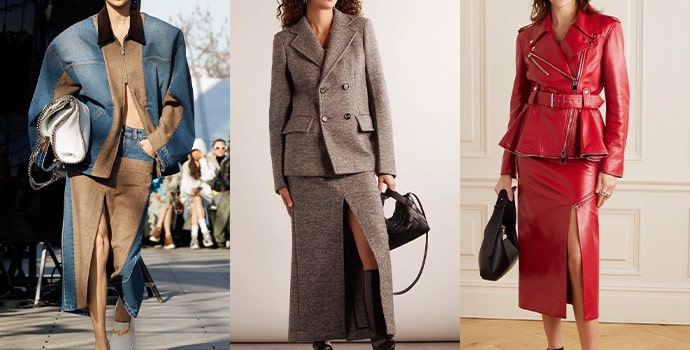The Best Fabrics to Look for in Branded Clothing for Summer
The Best Fabrics to Look for in Branded Clothing for Summer
Blog Article
Recognizing Garments: The Value of Fabric Choices in Your Wardrobe
The selection of material in clothing plays an essential function in both visual appeals and functionality. Different materials use differing degrees of breathability, convenience, and longevity, straight influencing the wearer's experience. Understanding these nuances can enhance one's wardrobe noticeably. Several ignore exactly how these choices can affect not just individual design, but likewise sustainability. What material choices could redefine your wardrobe and align it with both design and duty?
The Function of Textile in vogue and Capability

Common Textile Types and Their Characteristics
When selecting clothing, understanding the attributes of usual textile kinds is necessary for making informed options. Cotton, a widely-used all-natural fiber, is recognized for its breathability, soft qualities, and adaptability, making it suitable for sportswear and daily garments. Bed linen, another natural option, boasts outstanding moisture-wicking residential or commercial properties and a distinct appearance, ideal for cozy climates.Wool, commonly favored for its heat and resilience, varies in excellence; merino woollen is soft versus the skin, while coarser kinds are utilized for outerwear. Synthetic textiles like polyester and nylon offer longevity and resistance to creases, making them prominent for activewear and travel garments. Blends, which integrate all-natural and synthetic fibers, can boost functionality while keeping comfort. By identifying these fabric attributes, people can choose apparel that aligns with their way of life and visual preferences.
Breathability and Comfort: Selecting the Right Fabrics for Different Climates
Picking the right materials for numerous climates can considerably enhance comfort and overall wearability. Breathable products are necessary in hot environments, as they permit air circulation and moisture evaporation. Fabrics such as cotton, bed linen, and moisture-wicking synthetics properly draw sweat far from the body, keeping the wearer cool and dry. Conversely, in colder climates, thicker fabrics like woollen or fleece supply insulation while keeping breathability, making certain heat without overheating.Additionally, the selection of textile weight plays an essential role; light-weight fabrics are better for summer season, whereas larger options are fit for wintertime wear. Understanding the distinct residential properties of each textile allows individuals to dress appropriately for differing weather conditions. Eventually, choosing comfy and breathable textiles tailored to details climates can considerably improve everyday comfort and enhance the total experience of using garments.
Sturdiness and Treatment: Just How Fabric Influences Durability of Your Wardrobe
Picking the appropriate materials can greatly influence the durability and care needs of a closet. Fabrics such as cotton and polyester are known for their resilience and convenience of upkeep, making them optimal for daily wear. In comparison, fragile products like silk and lace require more careful handling and specialized cleansing methods, which can increase the time and effort needed for care. Branded Clothing.Durability is likewise influenced by the textile's weave and finish; snugly woven materials have a tendency to stand up to wear and tear much better than freely woven alternatives. In addition, synthetic blends frequently provide improved sturdiness, combining the finest high qualities of numerous fibers.Understanding the care directions for each and every textile is vital, as incorrect drying or washing can lead to early wear. Ultimately, picking durable products can lead to a longer-lasting wardrobe, reducing the frequency of substitutes and contributing to a more sustainable style choice
The Influence of Material on Fit and Shape

Sustainable Material Options: Making Eco-Friendly Decisions
The influence of material expands past fit and shape to encompass ecological variables, prompting a growing rate of interest in sustainable material options. Environment-friendly materials, such as organic cotton, hemp, and Tencel, are getting grip amongst consumers who prioritize sustainability in their closets. These materials are typically produced with fewer chemicals and water, minimizing their ecological footprint.Additionally, recycled fabrics, made from post-consumer waste, offer a cutting-edge remedy to the fabric sector's air pollution trouble. Brands increasingly embrace openness in their sourcing methods, permitting consumers to make enlightened choices concerning their purchases.Choosing lasting fabrics not just supports ethical methods yet likewise encourages the style market to take on more liable production approaches. As awareness of ecological issues increases, individuals are urged to assess the long-term effect of their material options, cultivating a movement in the direction of a much more environmentally aware and lasting technique to style.
Elevating Style: Exactly How Textile Can Transform a Clothing
While many may concentrate on shade and cut when picking an attire, the option of fabric plays an important role in boosting style and improving total appearance. Various materials communicate unique state of minds and messages; for instance, silk exudes high-end and refinement, while jeans offers a casual, kicked back vibe. The appearance and drape of a textile can dramatically alter the silhouette, with browse around this web-site organized materials supplying a refined appearance and softer ones producing a more fluid, relaxed aesthetic.Moreover, the weight of the textile influences wearability across periods. Lightweight fabrics like linen and cotton are ideal for summer, while larger materials such as wool and velvet offer warmth and sophistication in chillier months. Understanding fabric residential properties, such as breathability and stretch, additionally encourages people to make enlightened selections that improve comfort without endangering design. Ultimately, the best fabric can change an outfit from regular to phenomenal, making it an important consideration in any type of closet.
Regularly Asked Questions
Exactly how Do I Identify the Material Content of My Apparel?
To determine fabric material, one can examine care tags, conduct shed tests for fiber identification, or seek advice from fabric examples. These methods aid set apart materials, guaranteeing educated selections for apparel treatment and upkeep in daily wear.
Can Textile Choice Affect My State Of Mind or Confidence?
Material selection can considerably influence an individual's state of mind and confidence. Branded Clothing. Certain materials might evoke sensations of comfort or style, while others can feel restrictive or uncomplimentary, eventually affecting self-perception and psychological well-being throughout the day
What Fabrics Are Finest for Sensitive Skin?
For individuals with delicate skin, all-natural fabrics like bamboo, cotton, and linen are often recommended. These materials are breathable, hypoallergenic, and less most likely to trigger irritability, making them appropriate choices for comfort and skin wellness.
Just how Do I Correctly Clean and Care for Various Fabrics?
To correctly clean and care for various fabrics, one must consider each material's specific needs, including temperature setups, cleaning agents, find more information and drying methods, ensuring durability and preserving the fabric's original high qualities for ideal use.
Exist Particular Fabrics for Athletic or Efficiency Put On?
Athletic or efficiency wear usually uses materials such as nylon, polyester, and spandex. These materials are developed for moisture-wicking, breathability, and adaptability, boosting activity and comfort throughout physical activities while offering longevity and support. Alternatively, in colder environments, thicker textiles like wool or fleece give insulation while retaining breathability, making certain warmth without overheating.Additionally, the choice of textile weight plays a crucial duty; lightweight materials are preferable for summer, whereas heavier options are fit for wintertime wear. In comparison, delicate products like silk and shoelace need even more mindful handling and specialized cleaning methods, which can raise the time and initiative required for care.Durability is also affected by the fabric's weave and surface; firmly woven materials often tend to resist wear and tear far better than loosely woven alternatives. In comparison, rigid textiles can restrict movement however provide a classic, refined look.Moreover, the density and texture of the fabric can influence the visual understanding of body form. The influence of fabric extends past fit and silhouette to incorporate environmental factors, triggering a growing interest in sustainable material options. The texture and drape of a fabric can substantially modify the silhouette, with structured fabrics providing a sleek look and softer ones producing a more fluid, kicked back aesthetic.Moreover, the weight of the textile affects wearability across seasons.
Report this page